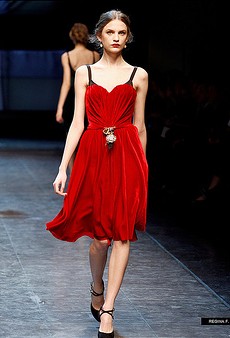Are Rising Prices a Sign of Health in an Industry?
 Photo: Wonderlane
Photo: WonderlaneOr do they signify desperation? This is the question that arose earlier this month in Congress, when the House Judiciary Committee again took up the question of creating copyright protection for fashion designs.
We (really, Chris) testified as the sole opponents to the Innovative Design Protection and Piracy Prevention Act, or IDPPPA, which would for the first time in American history provide a short (3 year) copyright for fashion designs, such as the cut and look of a particular dress or suit. To bolster our argument against the IDPPPA, Chris presented data from the Bureau of Labor Statistics that showed that since 1998 apparel prices in the U.S. had dropped or stayed steady—with one exception. At the very top level, prices rose dramatically in this period—by over 200%. The full testimony and graph can be found here.
Clearly more research is needed. But we think this suggests quite strongly that knockoffs are not harming the high-end of the fashion market. Why? Knockoffs are almost always cheaper than originals—often substantially. Were, say, the Forever 21 version of a Marc Jacobs dress truly competing with the original in the market, we would observe price pressure on Marc Jacobs as he tries to capture those consumers who have the means to buy an original but are drawn to a cheaper copy. And over time that pressure would show up in the aggregate price data, especially if the knockoff problem is as pervasive and serious as proponents of the IDPPPA argue.
The members of Congress at the hearing were generally interested in the price data and seemed to agree with our interpretation. But other witnesses challenged us, suggesting that “if you see just the high-end going up like that, it could be interpreted as a sign of producer desperation rather than a sign of health by those designers.”
Are rising prices at the top of the fashion food chain good news for producers—or bad?

Comments